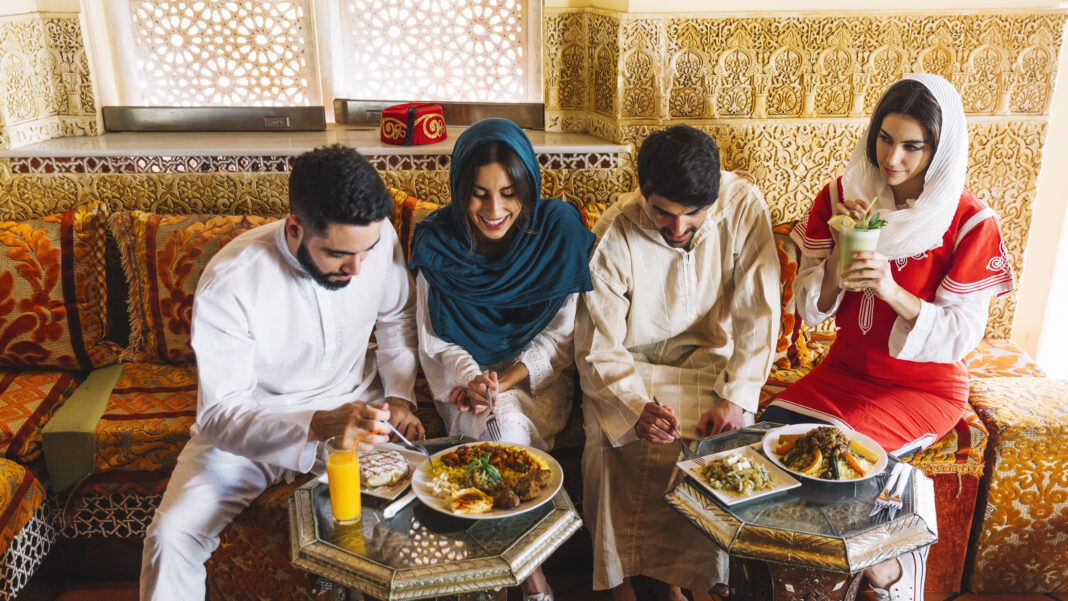Saudi Arabian cuisine is a rich tapestry woven with centuries of tradition, geography, and cultural exchange. Each dish tells a story of the Kingdom’s past, reflecting its values, climate, and the deep connection between its people and the land. From the bustling streets of Riyadh to the serene deserts of the Rub’ al Khali, Saudi food is a testament to the nation’s diversity and resilience. As the Kingdom embarks on its ambitious journey under Vision 2030, food distributor in Saudi Arabia plays a crucial role in preserving heritage while adapting to a rapidly changing world.
Traditional Saudi Dishes and Their Cultural Significance
The culinary identity of Saudi Arabia is most often symbolized by iconic dishes like Kabsa, Mandi, and Jareesh. Kabsa, perhaps the most famous dish, is a symbol of Saudi unity. The dish consists of spiced rice, meat (usually chicken or lamb), and a mix of vegetables, all cooked together in a fragrant broth. Kabsa’s origins trace back to the Bedouin tribes, where it was prepared in large pots for communal feasts. In Saudi Arabia, Kabsa is not just food; it is a ritual. Families and friends gather around a large platter to share the meal, reinforcing the strong sense of community.
Mandi, another beloved dish, is similar to Kabsa but has its own distinctive flavor. Traditionally, Mandi is cooked in a tandoor oven, allowing the meat to become incredibly tender while infusing the rice with smokiness. This dish’s origins lie in the ancient trade routes that passed through the Arabian Peninsula, bringing together influences from India, Yemen, and beyond. Mandi remains a favorite at weddings, holidays, and festive occasions, where it symbolizes hospitality and generosity.
Jareesh, made from crushed wheat, is a dish that traces its roots deep into Bedouin culture. Often cooked with meat and aromatic spices, Jareesh is both hearty and comforting, often served to guests as a mark of respect. This dish, like Kabsa and Mandi, is an expression of the warmth and hospitality that characterizes Saudi life. Though simple in its ingredients, Jareesh is a reminder of the Kingdom’s rural heritage, where sustenance was simple but nourishing.
The Role of Food in Saudi Social Life
In Saudi Arabia, food is not just about nourishment; it is an integral part of social life. Family meals are an occasion for bonding, and dining together is seen as an expression of love and respect. The act of sharing food is deeply ingrained in Saudi traditions, where meals are often served communally, and the host takes pride in ensuring every guest is well-fed.
The importance of food becomes especially evident during special occasions. During Ramadan, families gather for Iftar, the evening meal to break their fast, where dishes like dates, soup, and fruit salads are served alongside larger meals such as Kabsa and Mandi. These meals become more than just sustenance—they are an opportunity to reaffirm familial bonds and celebrate community.
The Influence of Geography and Climate on Saudi Cuisine
Saudi cuisine is closely tied to its geography and climate. The harsh desert environment has shaped the Kingdom’s food habits, as people needed meals that were both practical and nourishing. The use of rice, dates, and meat—often lamb or chicken—has always been a way to create meals that were rich in energy and easily preserved. Spices such as cumin, cinnamon, and saffron, which are staples in Saudi dishes, have not only enhanced the flavor but also played a role in food preservation.
The desert climate also meant that food preparation had to be done in ways that could withstand long journeys. Dishes like Kabsa and Mandi, which could be cooked over an open fire or in a tandoor oven, became practical solutions for feeding large groups of people on the move. The spices and methods of preparation were shaped by the need to maintain flavor and nutrition in a climate where resources could be scarce.
Modern Interpretations and Innovations in Saudi Cuisine
In recent years, Saudi cuisine has seen a transformation, blending traditional recipes with modern techniques and influences. A new generation of chefs is experimenting with flavors and ingredients, creating fusion dishes that respect traditional roots while embracing innovation. This shift has been fueled by the growing food tourism industry and the Kingdom’s increasing global presence.
One notable example is the rise of contemporary interpretations of Kabsa and Mandi. While the core ingredients remain the same, chefs are reimagining these dishes by incorporating different proteins, experimenting with cooking techniques, and adding unique flavors. The emergence of high-end restaurants in cities like Riyadh and Jeddah has helped elevate Saudi cuisine on the world stage, showcasing its rich culinary heritage in a modern context.
The Kingdom’s food culture is also evolving with Vision 2030, which aims to enhance the food and hospitality industries. As part of this initiative, there has been a push to promote local and organic ingredients, support small-scale farmers, and attract international culinary talent. Saudi Arabia’s growing reputation as a food destination is attracting tourists who are eager to experience its diverse and vibrant food scene.
Fine Food Supplier in KSA
With the increased focus on food quality and innovation, fine food distributor have become an essential part of Saudi Arabia’s culinary landscape. These suppliers play a vital role in ensuring that restaurants, hotels, and home cooks have access to the highest-quality ingredients. They offer a wide range of local and imported products, from fresh vegetables and spices to premium cuts of meat.
As Saudi Arabia continues its efforts to modernize and diversify its economy, fine food suppliers are not just meeting the demand for high-end cuisine; they are helping shape the future of Saudi food culture. Their contribution ensures that traditional Saudi dishes remain authentic while also adapting to the changing tastes and expectations of a global audience. The role of these suppliers extends beyond just providing ingredients—they are part of the Kingdom’s broader vision to elevate the food industry and promote sustainable practices in the culinary world.
Food and Its Cultural Legacy
Food in Saudi Arabia is a reflection of the nation’s rich cultural heritage and evolving identity. As Saudi Arabia embraces modernization and globalization, its food culture remains a steadfast symbol of its past. Saudi Dishes like Kabsa, Mandi, and Jareesh are more than just meals; they are representations of the Kingdom’s history, values, and way of life. Through food, Saudis celebrate their heritage while looking toward the future, creating a culinary legacy that will continue to evolve for generations to come.
Conclusion
Saudi Arabia’s culinary story is one of deep-rooted traditions, evolving tastes, and modern innovations. From the aromatic spices of Kabsa to the communal sharing of Mandi, food in Saudi Arabia is a vital part of the nation’s culture and social fabric. As the Kingdom continues to transform under Vision 2030, its food culture remains a testament to its rich history, while also embracing new opportunities to shape its future. Through food, Saudi Arabia continues to tell the story of its people—generous, hospitable, and ever-adaptive.
read other blogs




